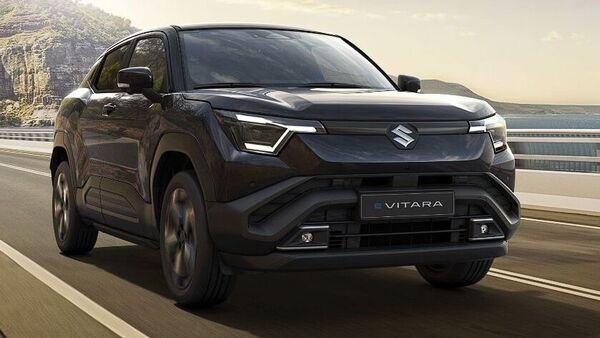Introduction to the Maruti Suzuki e-Vitara
Maruti Suzuki is preparing to introduce its latest electric vehicle, the e-Vitara, in the Indian market on September 3. This model has been highly anticipated as it marks the first electric car from the renowned automotive manufacturer in India. The e-Vitara is expected to compete with several other electric vehicles in the Indian passenger vehicle market, including the Hyundai Creta EV, Mahindra BE 6, Tata Curvv EV, and MG ZS EV.
The e-Vitara, already introduced in the UK, showcases impressive specifications. It promises a range of up to 426 km (WLTP) on a full charge. Additionally, the battery pack can be charged from 10% to 80% in just 45 minutes using a DC fast charger. These features position the e-Vitara as a strong contender in the evolving electric vehicle landscape.
Design of the e-Vitara
The design of the e-Vitara reflects modern and premium aesthetics. It features LED projector headlights, Y-shaped LED daytime running lights (DRL), and front fog lamps. As an electric vehicle, it omits the traditional radiator grille. The side profile includes black cladding and 18-inch aerodynamically optimized alloy wheels. At the rear, the vehicle sports a black bumper, three-piece LED taillights connected by a glossy black strip, enhancing its visual appeal.
Interior and Features of the e-Vitara
Inside the e-Vitara, the cabin is equipped with a dual-spoke steering wheel and a dual-screen dashboard setup. This includes a 10.1-inch touchscreen infotainment system and a 10.25-inch digital instrument cluster. Additional interior features include rectangular AC vents, an auto-dimming IRVM, semi-leatherette seats, an electronic parking brake, and a wireless phone charger.
The vehicle also offers a panoramic sunroof, a 10-way adjustable driver’s seat, and ventilated front seats. Safety and convenience are prioritized with standard features such as seven airbags, a 360-degree surround view camera, and ADAS technology.
Performance, Range, and Charging Capabilities
The e-Vitara comes with two battery options: 49 kWh and 61 kWh capacities. The smaller 49 kWh battery offers a WLTP range of up to 344 km and is available with a front-wheel drive setup producing 142 bhp and 193 Nm of torque. The larger 61 kWh battery is available in both front-wheel drive and all-wheel drive variants.
The FWD version provides a range of up to 426 km, powered by an electric motor that delivers 171 bhp and 193 Nm. The AWD version boosts power further to 181 bhp and 307 Nm of torque, with a range of up to 395 km.
Charging times vary depending on the battery size and charger type. The 49 kWh battery takes approximately 6.5 hours to charge from 10% to 100% using a 7 kW AC charger and 4.5 hours with an 11 kW charger. The 61 kWh battery requires about nine hours and 5.5 hours, respectively. Both battery packs can reach 80% charge in 45 minutes using a DC fast charger, making them convenient for quick top-ups.
Conclusion
The Maruti Suzuki e-Vitara represents a significant step forward for the company in the electric vehicle market. With its appealing design, advanced interior features, and impressive performance capabilities, the e-Vitara is well-positioned to attract a wide range of customers. As the Indian market continues to embrace electric vehicles, the e-Vitara is set to make a notable impact.







